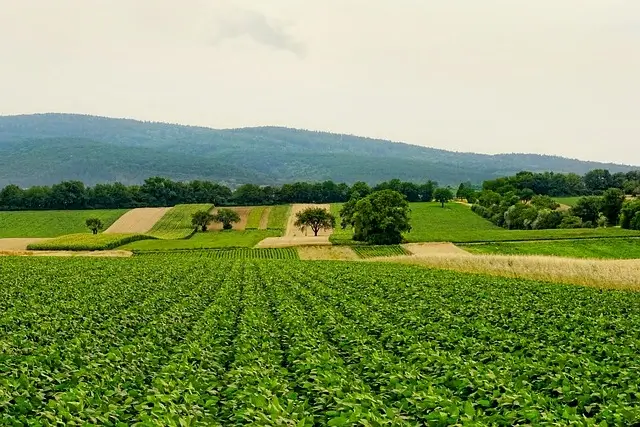Introduction
In our contemporary society, when it is simple to get fresh produce at supermarkets and farmers’ markets, we frequently take for granted the lengthy trip our food takes to get to our plates. Multiple steps and procedures are involved in the supply chain in agriculture, which connects the farm to the market. We will examine the many phases involved in navigating the agricultural supply chain in this blog, illuminating the complex network of actions that guarantee we have access to wholesome food.
Supply chain in agriculture
There are various steps in a product journey from farm to market. These phases or steps are involved in the complex network of the supply chain of agriculture:
Step 1: Production at the Farm:
It all starts on a farm, where devoted farmers toil ceaselessly to cultivate and nurture crops or rear cattle. They make crucial choices about the type of crop to grow, the methods of cultivation, and animal care. To guarantee optimal harvests, factors including soil quality, weather patterns, and insect management are carefully taken into account. In order to encourage healthy development, modern agricultural techniques also include the judicious application of fertilizers and pesticides.
Step 2: Harvesting
Harvesting is the next step, which is done after the crops are fully grown or the livestock is of an acceptable age. This technique may need physical labor or the use of specialized equipment, depending on the type of crop. A great deal of care must be taken in the crucial process of harvesting to guarantee that the food is high-quality and undamaged.
Step 3: Packaging and Grading
The product is packed once it has been harvested to keep it safe throughout transit. Depending on the type of crop, packaging materials like crates, cartons, or bags are utilized. Crops may also go through grading, which is the process of classifying them according to size, shape, and quality. Grading facilitates the distribution process and guarantees that consumers receive goods of constant quality.
Step 4: Transportation:
In order to connect fields and markets, transportation is essential. To transport agricultural products from rural regions to metropolitan centers and beyond, effective logistical systems are used. Long-distance travel frequently involves the use of trucks, trains, ships, and airplanes, whereas local travel involves the use of smaller vehicles. Care must be used while handling the goods to avoid damage and keep it fresh throughout transportation.
Step 5: Storage & Warehousing
It is frequently essential to temporarily store agricultural items during shipment. Temperature-controlled warehouses and storage facilities aid in preserving the quality and freshness of perishable items. For the items to stay fresh longer and retain their nutritional content, proper storage conditions are essential.
Step 6: Processing and Value Addition:
Before they are sold, some agricultural goods may go through processing or value addition. This process includes turning raw resources into processed products, such as canning fruits and vegetables, pressing olives to make oil, or milling wheat into flour. Processing increases the products’ value and frequently lengthens their shelf life. Additionally, it offers chances for the agriculture sector to diversify and innovate.
Step 7: Distribution:
Distributed to retailers, distributors, and other middlemen after the agricultural products are prepared for the market. These intermediaries are essential in bringing farmers and customers together. Wholesalers buy a lot of goods from farmers and sell them to retailers, who in turn deal directly with customers. Distribution networks are built to transfer goods quickly from warehouses to a variety of markets, guaranteeing a consistent supply to satisfy customer demand.
Step 8: Retail and Consumer Access:
When agricultural goods are made available to customers, the supply chain has completed its journey. Grocery stores, farmers’ markets, internet marketplaces, and even farms themselves, can provide this service. Consumers have the chance to make educated decisions at this point depending on their tastes, dietary needs, and beliefs. Consumers may learn more about the origin, manufacturing processes, and quality of the items they buy thanks to labels and certificates.
Conclusion:
An intricate and interwoven supply chain connects the farm to the market, ensuring a consistent flow of agricultural goods. In this complex system, farmers, transporters, processors, distributors, retailers, and consumers all play significant roles. A better understanding of the agricultural supply chain’s processes might make us more aware of the cooperation and work needed to get food to our meals. We can promote more resilient and effective food systems for the benefit of all by encouraging sustainable and ethical practices across the supply chain.


Thank you for your sharing. It’s fascinating how much goes into getting food from farm to table! The supply chain is a true behind-the-scenes operation that we often overlook. From the initial farming techniques to packaging, transportation, and even processing, every step ensures we get quality produce. I especially appreciate the role of grading and transportation in maintaining freshness and quality. Understanding all these phases really highlights how interconnected the agricultural world is and the effort that goes into our food systems.
Hi, I’m Srishti. I never realized how many steps are involved in bringing food to our markets! The entire process, from farming to retail, involves so much coordination and care. It’s interesting how packaging, storage, and transportation play such a crucial role in keeping food fresh and nutritious. With the growing demand for transparency, I think it’s also great that consumers can now track the journey of their food. It’s a reminder of how important it is to support sustainable and ethical practices in the agriculture supply chain!